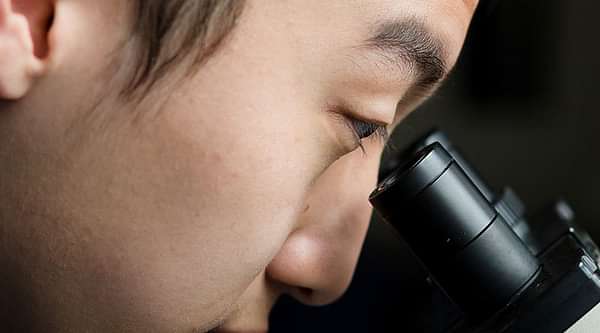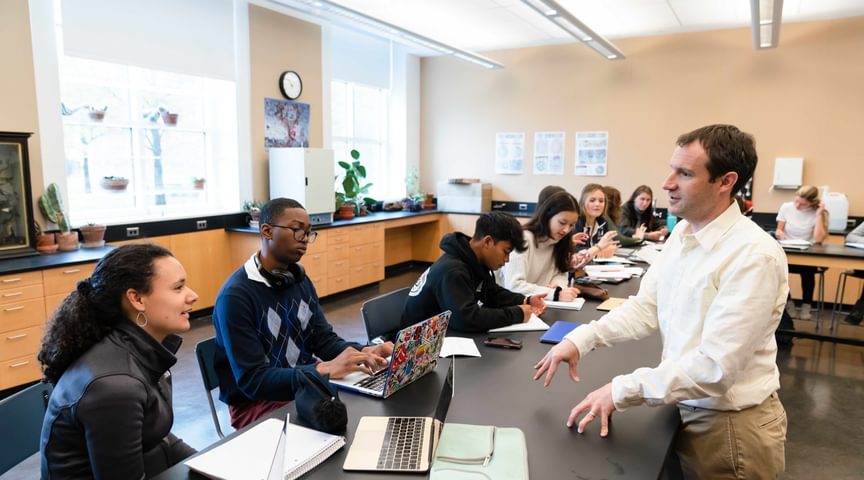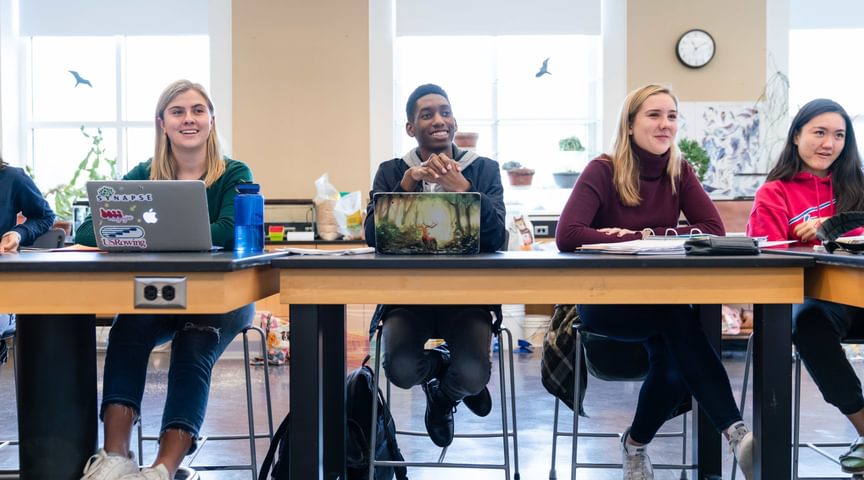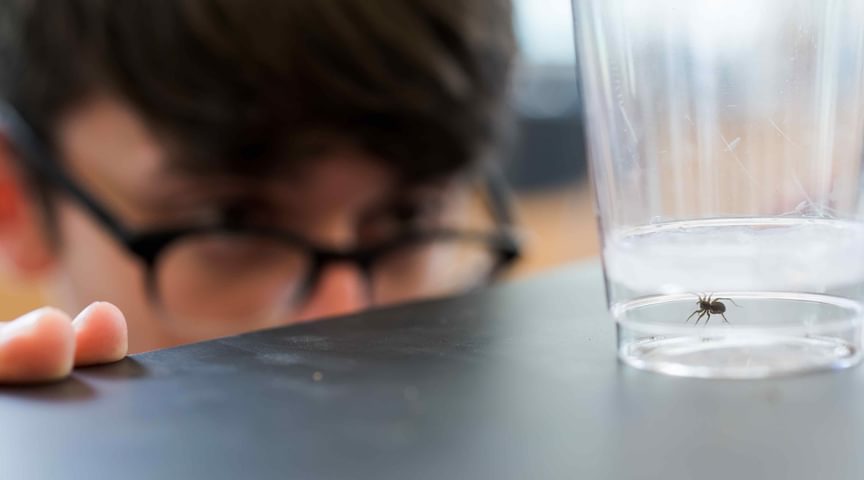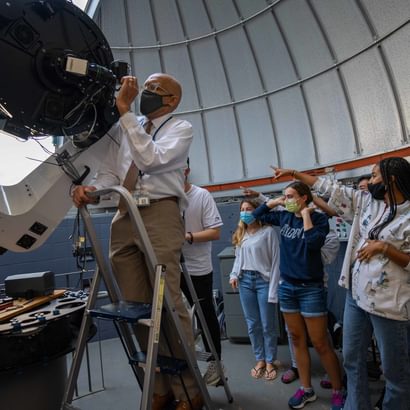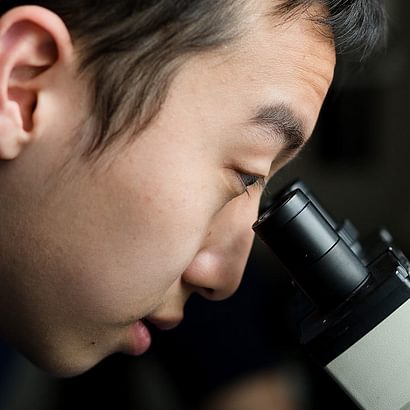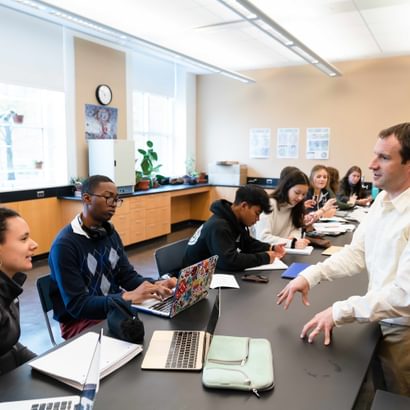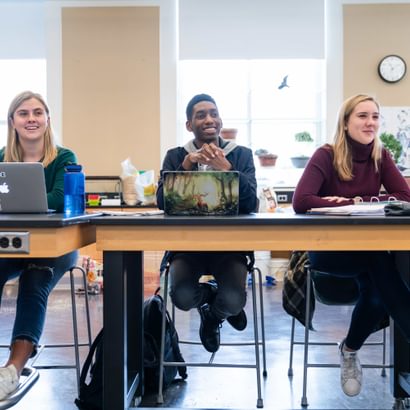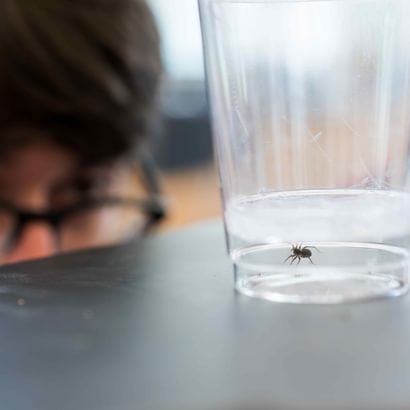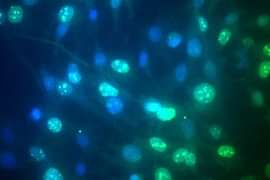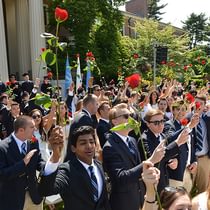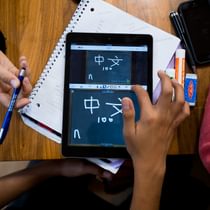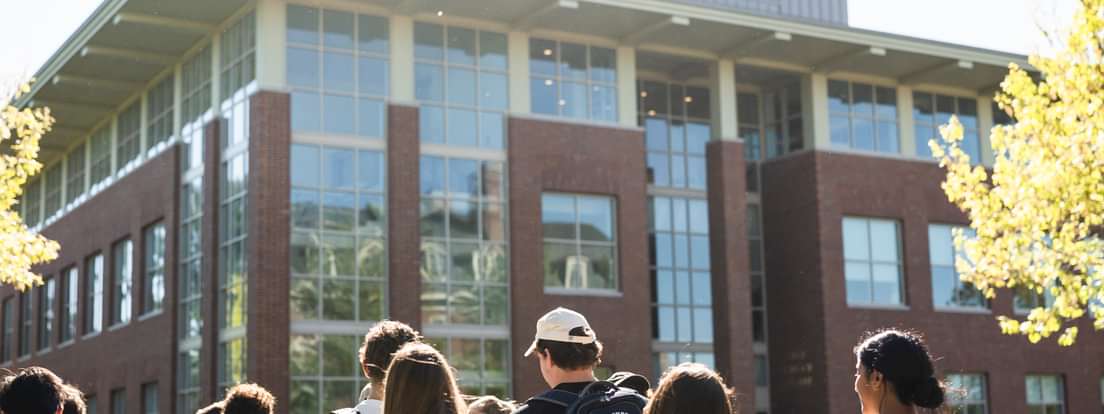
Gelb Science Center
Three floors of flexible, contemporary lab and classroom space; college-level scientific equipment and digital integration. A seismometer; fish tanks, reptiles and ornithological collections; and, on the roof, an observatory dome with a research-grade telescope used for astronomy discoveries and wondrous celestial viewings.
The Phillips Academy Observatory
The Phillips Academy Observatory is situated on the roof of the Gelb Science Center. Installed in 2004, the roof-level dome rotates 360 degrees and is outfitted with a computer controlled, DFM 16-inch Schmidt-Cassegrain reflector telescope. Two additional telescopes ride piggyback on the DFM, a Lunt Solar Systems 60 mm Hydrogen-alpha refractor and an Orion Premium 102-mm ED refractor. These offer outstanding views of the sun by day and wide field views of the cosmos by night. The observatory is equipped with a spectrograph and an SBIG large format CCD camera with a full set of Bessel UBVRI Photometric Filters.
Molecular Biology Research Laboratory
“Doing science,” the first goal of Andover’s science program, is the mechanism by which many students learn best. It is this principle of experiential learning that guides the Molecular Biology Research Program. Beginning with instruction on model systems and techniques widely used in professional laboratories, students enrolled in Bio 600 embark on independent research projects of their own choosing. As they design their experiments, students will often form active collaborations with professional scientists from other institutions in the U.S. or abroad, gaining access to cutting edge reagents and additional expertise. In past years, students have examined a wide range of topics, from the roles that specific genes play in the proliferation and migration of brain cancer cells—to the genetic controls promoting successful regeneration of motor neurons in nematodes—to novel gene targeting strategies for the production of “humanized” proteins in bacteria. The laboratory space provides students with a wealth of resources, including a mammalian tissue culture area and a multitude of molecular biology reagents and equipment. Projects culminate in a written scientific paper and a presentation before the PA community.





